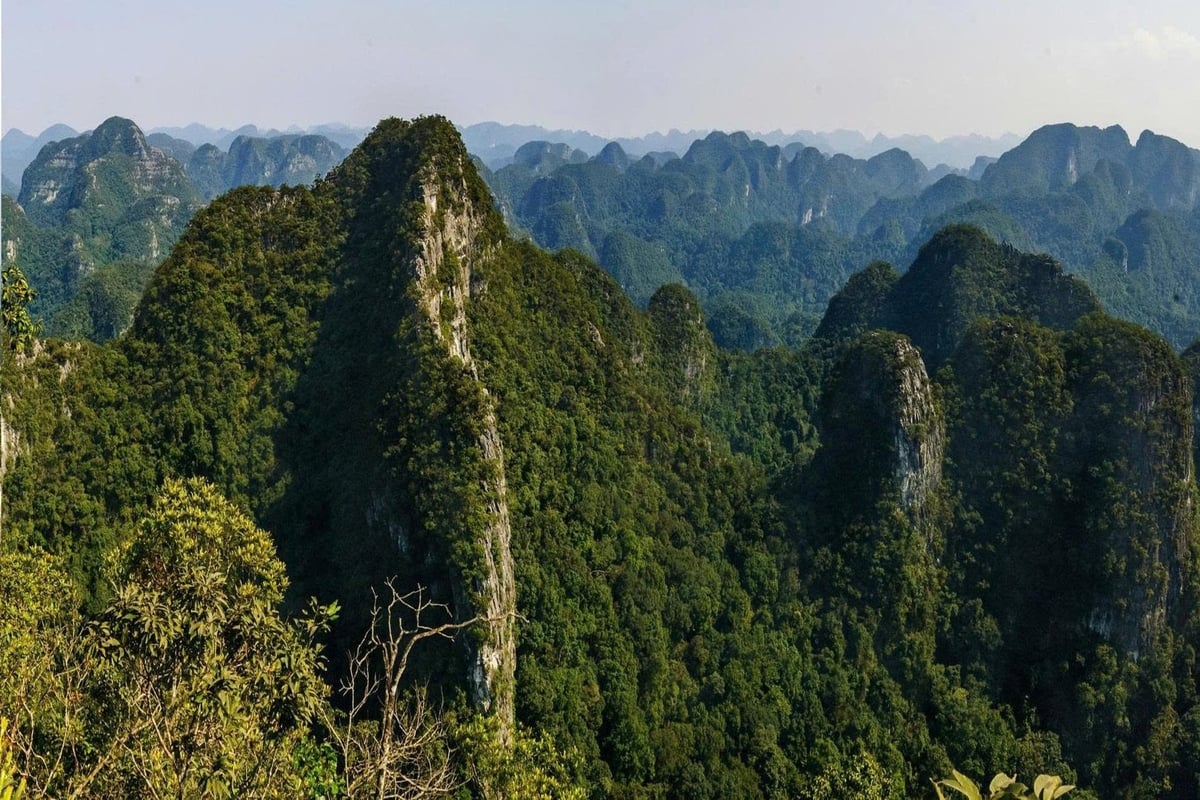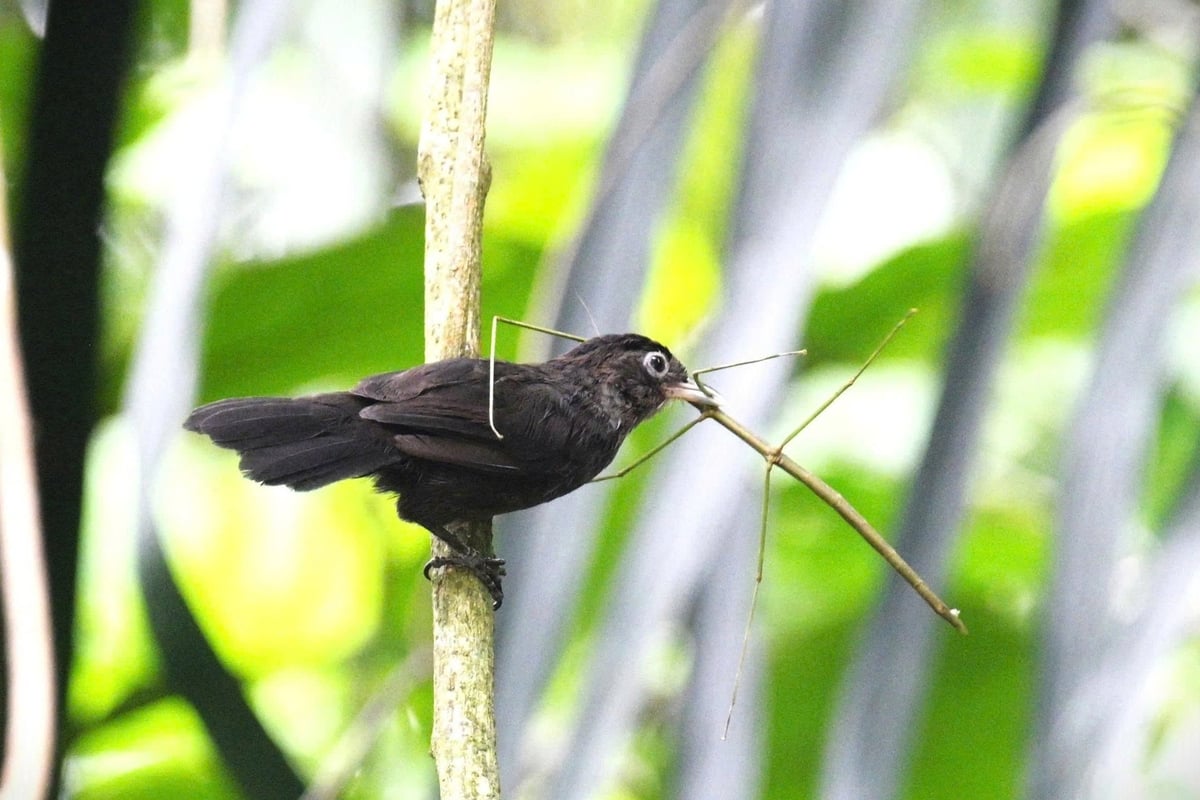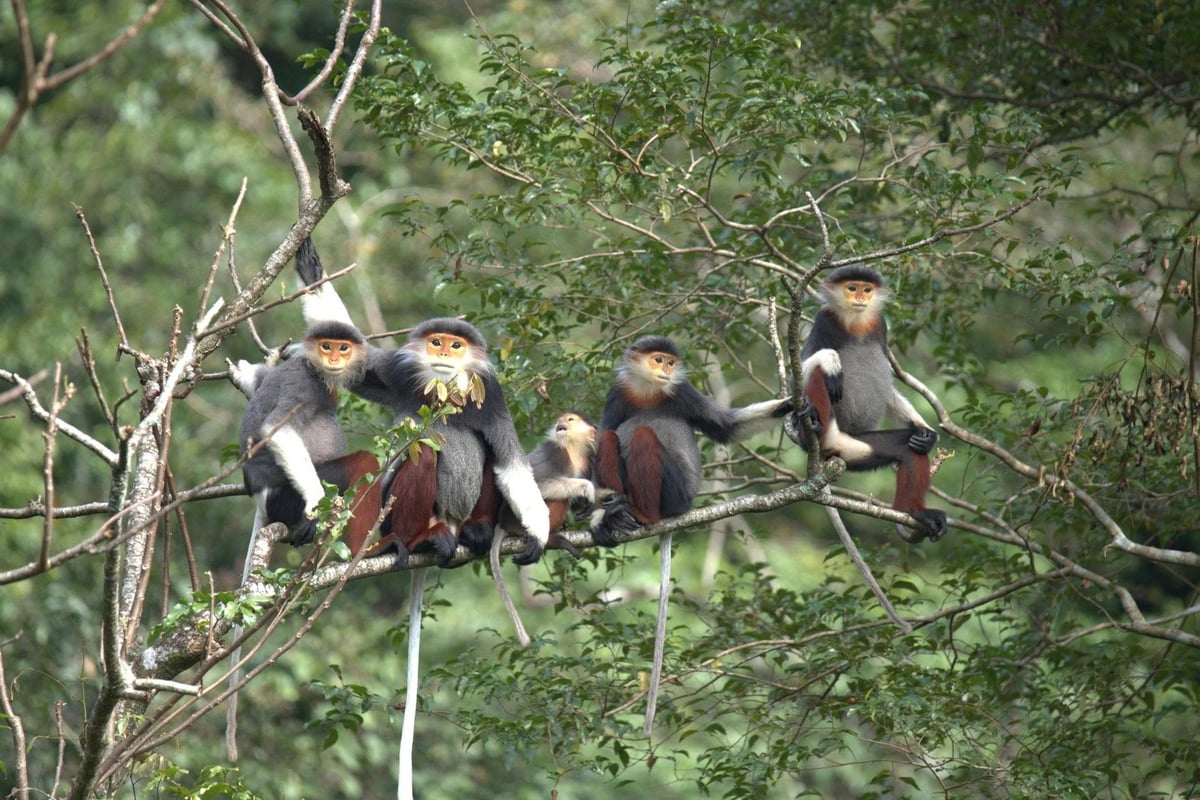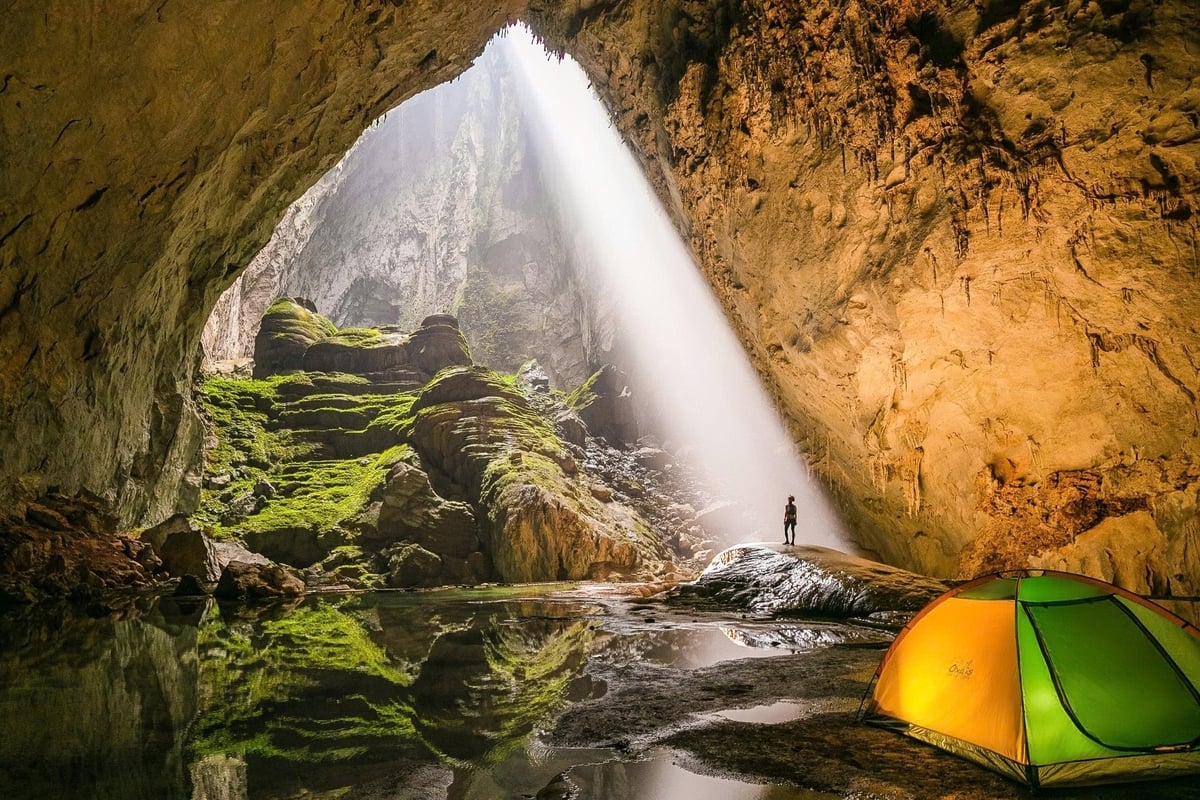October 30, 2025 | 18:19 GMT +7
October 30, 2025 | 18:19 GMT +7
Hotline: 0913.378.918
October 30, 2025 | 18:19 GMT +7
Hotline: 0913.378.918
Phong Nha - Ke Bang has been twice inscribed by UNESCO as a World Heritage Site. It is also the first national park in Southeast Asia and the third in Asia to meet three out of four criteria for a natural world heritage site.

Phong Nha - Ke Bang preserves a unique evergreen forest heritage found only on limestone mountains.
Since the 1920s, Phong Nha—Ke Bang has been known as a globally important karst region famous for its caves. French tourists began organizing expeditions to the area as early as 1937. In 1986, it was designated a special-use forest and officially became a national park in December 2001.
The park's development and its outstanding geological, geomorphological, hydrological, and climatic features have created an ideal environment for biodiversity, making it an integral part of the region’s global significance. Representing the biodiversity of the Truong Son mountain ecosystem, the park is one of the 200 globally significant biodiversity centers. It has been recognized by BirdLife International as one of Vietnam’s 60 Important Bird Areas.

The black-capped babbler is an endangered and endemic species of high conservation value and global significance.
Phong Nha - Ke Bang harbors a diversity of natural ecosystems, including limestone mountain forests, non-limestone mountain forests, and transitional areas, river and stream systems, cave ecosystems, and secondary habitats. These form a complete evolutionary system in which flora and fauna co-evolve, establishing stable food chains and networks. The biodiversity and habitats within the park provide scientific evidence for the evolutionary origins of species over the Earth's historical development.
With 2,954 species of vascular plants and 1,399 species of animals, Phong Nha - Ke Bang ranks among the most biodiverse areas in the world. Most are endemic to the region, with 116 plant species and 129 animal species listed in Vietnam’s Red Book or under Government Decree 32. In addition, 28 species are globally threatened and have high economic and scientific value.
Among the endangered or endemic species of global conservation importance are the limestone Calocedrus (Calocedrus rupestris), Northern Vietnamese Dalbergia, red-shanked douc langur, white-cheeked gibbon, and black-capped babbler. Notably, the Truong Son rock rat (Laonastes aenigmamus), the only surviving member of the ancient mammal family Diatomydae, believed to have gone extinct 11 million years ago, was rediscovered here. Phong Nha - Ke Bang ranks second in Vietnam for the number of new species discovered, after Bidoup-Nui Ba National Park, with over 120 newly recorded species.

Phong Nha - Ke Bang National Park is home to thousands of rare and endangered plant and animal species.
Some examples include the limestone warbler, Phong Nha gecko, Paradise scorpion, Phong Nha prawn (Macrobrachium phongnhaense Do & Nguyen sp. n), Phong Nha stream fish (Speolabeo hokhanhi), Son Doong cone snail, and Va Cave bent-toed gecko. In just over 20 years since its establishment, the park has yielded 48 new species to science, with two more newly discovered in 2024 and 2025: the Va Cave bent-toed gecko and the Son Doong cone snail.
Phong Nha - Ke Bang features a forest type found nowhere else on Earth. It contains tropical evergreen forests dominated by conifer species like Calocedrus rupestris, with understories of lady’s slipper orchids (Paphiopedilum spp.) growing at elevations from 700 to 1,000 meters on limestone terrain. The park also hosts 15 identified forest types contributing to ecosystem diversity, with the limestone evergreen forest being of international importance.
It has the oldest geological history of any national park in Vietnam and possibly among national parks in Malaysia, Indonesia, and the Philippines, with development dating back over 400 million years (from the Devonian period). The limestone here, aged between 400 - 460 million years, is the oldest in Southeast Asia, older than those in Gunung Mulu (20 - 40 million years) or Puerto Princesa (5 - 23 million years).
Moreover, stalactites within the park’s caves are considered the oldest in Southeast Asia. While major caves in the region such as Gunung Mulu (Malaysia), Puerto Princesa (Philippines), and Phang Nga (Thailand) have stalactites no older than 200,000 - 300,000 years, Son Doong Cave's formations are estimated to be up to 500,000 years old.
The park boasts over 1,000 caves and is known as the "Kingdom of Caves." Scientists have surveyed and mapped 447 caves stretching over 246 kilometers. In 2024 alone, researchers and explorers discovered 34 new caves with a combined length of 14 kilometers.

Phong Nha - Ke Bang National Park is also known as the “Kingdom of Caves,” with over 1,000 caves of various sizes.
The Phong Nha - Ke Bang cave system is the oldest in Southeast Asia. Cave formation began around 35 million years ago, coinciding with the rifting that formed the East Sea during the Oligocene epoch. Among the surveyed caves, Hoa Huong Cave is considered the oldest, formed during the Miocene period around 5 million years ago.
In 2009, National Geographic recognized Son Doong Cave as the world’s largest natural limestone cave. In 2013, Guinness World Records officially listed it as the largest natural cave in the world, with a length of nearly 9 km, a width of 150–200 meters, a height of over 200 meters, and a volume of 38.5 million cubic meters. Before this, Malaysia’s Deer Cave held the record until Son Doong was fully explored and measured.
To date, 22 caves in Phong Nha - Ke Bang National Park have been opened to tourism.
Translated by Kieu Chi

(VAN) Sustainable rice production requires a comprehensive soil management strategy, the application of technology, value chain linkages, and integrated economic, social, and environmental solutions.

(VAN) Kim Anh commune (Hanoi) is shifting to biosecure livestock farming to improve product quality and increase sustainable economic value.

(VAN) Early on October 30, all relief supplies from the Russian Federation arrived at Noi Bai Airport and immediately transported to Hue City during its peak of the flooding.

(VAN) According to Deputy Minister Nguyen Hoang Hiep, just 20 days after the appeal was launched, Viet Nam received assistance from 30 countries and international organizations, with a total value of USD 9.7 million.

(VAN) SEAMAP and ROMONA sign a 2025 - 2028 Memorandum of Understanding, marking a new chapter in Viet Nam’s marine geodesy and positioning technology development.

(VAN) UNICEF, in cooperation with the Ministry of Agriculture and Environment, has provided 800 water storage tanks, 800 essential hygiene kits, and 80,000 water purification tablets to people affected by the recent floods.

(VAN) More than 32,000 plant genetic samples currently preserved in Vietnam’s National Genebank are laying the foundation for the establishment of a National Botanical Garden and the development of climate-resilient crop varieties.